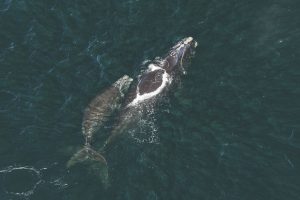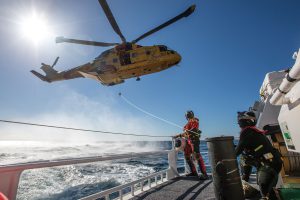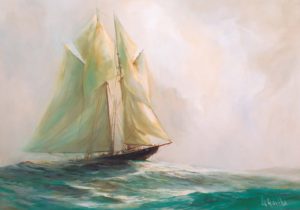
Wildlife
Punctuation’s mark: Can we save the critically endangered North Atlantic right whale?
After a series of mass deaths in recent years, what can we do?
- 4110 words
- 17 minutes
This article is over 5 years old and may contain outdated information.
Science & Tech

Lurking off the west coast of Vancouver Island, an undersea glider is working to keep the waters safe by transmitting data that will help prevent collisions between whales and ships.
Researchers at the University of Victoria, in collaboration with Dalhousie University, launched the glider to measure whale activity in busy shipping lanes. When it detects whales, the glider sends a signal to nearby ships through an automatic identification system, allowing them to alter their course or speed if needed to avoid a collision.
The glider is battery-powered and has enough energy to operate for three weeks underwater.
Here, David Duffus, an associate professor in the department of geography and director of the Whale Research Lab at the University of Victoria, expands on the glider and explains why collisions between whales and ships happen.
Q: How does the glider operate and where?
The glider operates by passive diving geometry to move forward along its programmed pathway. A small ballasting pump in the nose draws the machine into a dive and it swoops forward and to a maximum depth of 200 before surfacing in a sawtooth pattern. In this deployment the glider was sent out to the continental shelf break about 70 kilometres offshore from Clayoquot on the west coast of Vancouver Island. It is covering a pattern to cross the shelf break and canyons that may provide large whale habitat.
Q: Why/how do collisions between whales and ships happen?
A large vessel may strike a whale and not even know about it. Whales may not hear ships approaching as most of the vessel sound is directed backwards at the surface. It may also be the case that the animals have no reaction to large vessels, or perhaps an insufficient one to recognize the danger.
If the glider is successful, what other areas of Canada could the glider be brought to?
Our program on the Pacific coast is the second area our project has focussed on. The Dalhousie group has had a year of glider operations already and is logging whale and habitat data. The data we are collecting on this round will go some way towards opening a window into the whale and ship issues on the west coast. I think Arctic waters would be an important area to build a monitoring and management program. If current trends continue, the shipping through the Arctic may increase as sea ice decreases.
When will the first round of data from the glider be available?
We are watching the glider via its satellite link and intend to retrieve it in about two weeks. We will begin working on it almost immediately and throughout the summer. We will be able to identify whales by species and location and add important habitat variables to our knowledge base.
Are you passionate about Canadian geography?
You can support Canadian Geographic in 3 ways:

Wildlife
After a series of mass deaths in recent years, what can we do?

People & Culture
A celebration of the Canadian Coast Guard’s renowned search-and-rescue capabilities — and more — as the special operating agency turns 60

History
The symbolism of the iconic Canadian fishing and racing schooner Bluenose may be as relevant today as it was 100 years ago when the ship first hit the water

Science & Tech
How Wildlife Conservation Society Canada researchers are working to identify possible collision areas between ships and whales using satellite data